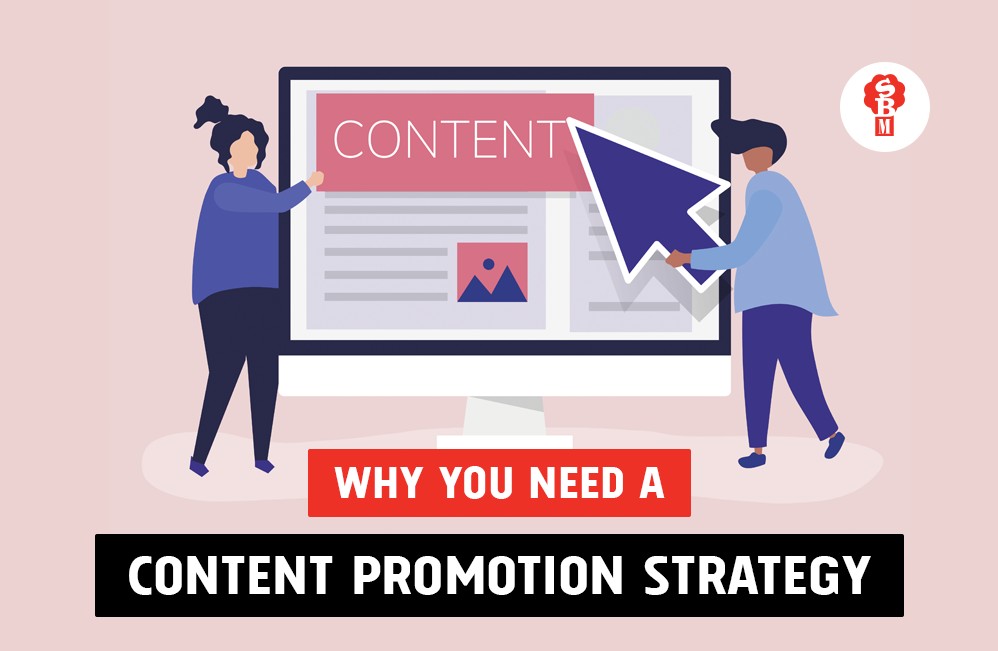Content promotion strategy

The importance of promoting your content
Creating great content is one thing, but ask yourself this, who is going to see it?
Do you share your content?
A common area of digital marketing that many businesses neglect, is the resources put into promoting that they have created. Let’s estimate the cost of creating one good blog post, and the impact of this in terms of digital traffic from search engines and social shares etc. compared to the cost of simply paying for website traffic through SEM or social media ads.
There are numbers floating around online suggesting something known as the 80/20 rule, which dictates that when looking at the time and resources going into content, 20% should be on the actual content creation, while 80% should be on promoting it. In this article, we won’t be pushing this rule but will be suggesting you at least consider a 50/50 rule, and then see the results for yourself.
Firstly, how to work out the cost of creating content in the form of a blog post. In Australia, the average hourly rate for experienced content writers is around $25 per hour, although depending on factors like specific topic knowledge, skill, quality of work, etc. it can is not uncommon for content specialists to charge upwards of $50 as an hourly rate.
Going with 2-3 hours time to create an informative and valuable blog post, so far we are at $75. Add to this an hour of graphic design at the same rate, and the bare minimum cost of creating a blog post is around $100. That’s if you do your content marketing strategy in house. This bumps up to $200 if your staff are more experienced and senior, or if more graphic design is required, and can easily be over $300 if you are engaging with an agency or guest post on the higher end of the price scale to create your content.
So $100 to $300 to create a quality blog post.
What does this achieve?
Website content is incredibly valuable for a number of reasons. It shows your knowledge and expertise to customers and potential customers and can function as a resource for your target audience etc. There is a heap of value here.
It is also a method of generating traffic though, and it’s for that purpose that we will review the value of content in this particular comparison.
An easy way to check the impact of existing content is within Google Analytics, and there are two handy metrics to look at here.
Let’s take our own website as an example. By navigating to Behaviour > Site Content > All Pages, we are presented with the following information:

For this purpose, let’s focus on blog copy, so we can narrow this down with the filter, to only include URLs including ‘blog’.

We then end up with this data, showing what blog content on our website has been the most popular in terms of recent page views:

What does this tell us?
This tells us what blog content our website visitors have shown the most interest in, whether they have found that content somewhere online and visited the website, or they have visited our website, navigated to the blog, and found these articles that way.
As we have not promoted this content with any paid ad activity, this traffic is a combination of content promotion through channels like organic search, social shares, referrals, and clicks from emails, and so it gives an indication of how many views each piece of content has had without a paid promotional strategy.
Digging a little deeper we can also see which posts directly generated website visitors, by looking at landing pages.

Not surprisingly some of our posts from last year, Graphic Design Trends 2018 and Web Design Trends of 2018, are still getting the most traffic. This would also be impacted by their long term SEO exposure and it’s easy enough to review your most valuable content in terms of SEO, but this can be a topic for another post.
What does this mean?
Well based on the top 10 blog posts to directly attract visitors, we can tally these numbers and see that these 10 URLs attracted just under 1,050 clicks. If we were to go with the estimated costs above of creating blog articles ($100-$300 each), 9 blog posts (excluding 1 as this was the main blog page URL), we can assume a cost of $900 to $2,700.
Excluding the obvious value of having this content on your website and looking purely at traffic generated, this works out as between $0.85 to $2.50 per click, based on the cost of creating the articles.
Next step is to compare this to the cost per click of driving traffic to your website from a paid medium like Facebook ads.
Typical cost-per-click prices we see here for ad campaigns promoting website content often have a CPC of between $0.50 to $2.00, so a potentially 20-40% cheaper than the calculated cost of creating the content in the first place.
Taking this into consideration, if we were to match the budget spent on each blog post with the ad spend assigned to promote the content via social media, then assuming the cheaper CPCs above, we should see the views of the content not only double, but quite possibly get 10% to 20% more traffic than if we were to just create a 2nd blog post.
This is also based on the 9 best performing blog articles, and not including those which have generated less traffic.
So what do we suggest?
We suggest that whatever you spend creating content, consider spending at least that much promoting, if not more.
Say you calculate the cost of creating a piece of content for your website to be $200 in terms of you and your staff’s time, then consider spending $200 promoting this content via Facebook ads and other paid social activity. For larger scale campaigns we also recommend the option of using Google Display to promote content pieces to get a bigger reach.
Then having done this, give it a little time, it could be 1 month, 2 months, 3 months, etc. and compare the traffic and results from this content you have promoted via paid means, compared to content you have done without any paid amplification. If the results are over double in terms of visitors, without sacrificing too much in the way of traffic quality, then you’re on to a good thing!
Continuing on, you can try promoting content by 2x, 3x, and 4x, the original creation costs and see how you go.
We will be using this blog post as an example, analyzing the traffic and results from this post compared to the previous 3 posts which have had no additional promotion strategies.
Stay tuned…
Three other top tips we recommend and practise for content promotion:
1. Send new content to your email list
One of the best things you can do for your blog or brand is to build an email list/database. It’s one of the best channels for reaching the largest percentage of your followers. People have opted in to hear from you; they’re primed and ready to open, click, and engage with what you send.
For an example of the power of email, we send each new blog post to 400+ people (thanks, everyone, and if you want to sign up, click here and scroll down for 7 hot tips to make your website stand out.)
Of those 400+ people, 30% open the email and read what’s inside, and 3.5% people click through to the full article.
The takeaway: Grow an email list.
Tips to double your email list growth in one month by focusing on a few key strategies. You can do this without an email popup, which is a great strategy for lots of blogs but sometimes not quite the right fit. Three successful CTAs are:
- Slideup CTA that comes up from the right corner of the page after a user scrolls 60% down
- HelloBar (pinned to the top)
- Feature signup box on the main blog domain (blog.buffer.com but no other article pages)
2. Share multiple times to social media
We’re grateful for the chance to share with large audiences on Instagram, Twitter, Facebook, Google my business, and LinkedIn. Sharing once to these networks let us get a new post in front of 1,000s of readers who then have the potential to share it with thousands of their readers, and so on and so on.
3. Focus on the places that get the best results
One of the best posts we’ve read on content promotion strategies is by Shannon Byrne on KISSmetrics. Shannon shares all the strategies she’s used at Mention, which is super helpful to see how to put a plan in place.
She’s got this one section, in particular, that shows how to go about finding the distribution channels that work best (and focusing on those places moving forward).
Her tips:
- Looking at referral sources in Google Analytics
- Monitoring keywords to discover what conversations are happening, where
- Looking at what content is trending on the forums our audience is on
Get in touch to see how we can help your brand’s digital marketing.
Send us an email at info@spicybroccoli.com, or give us a call on +61 2 8084 5554!
